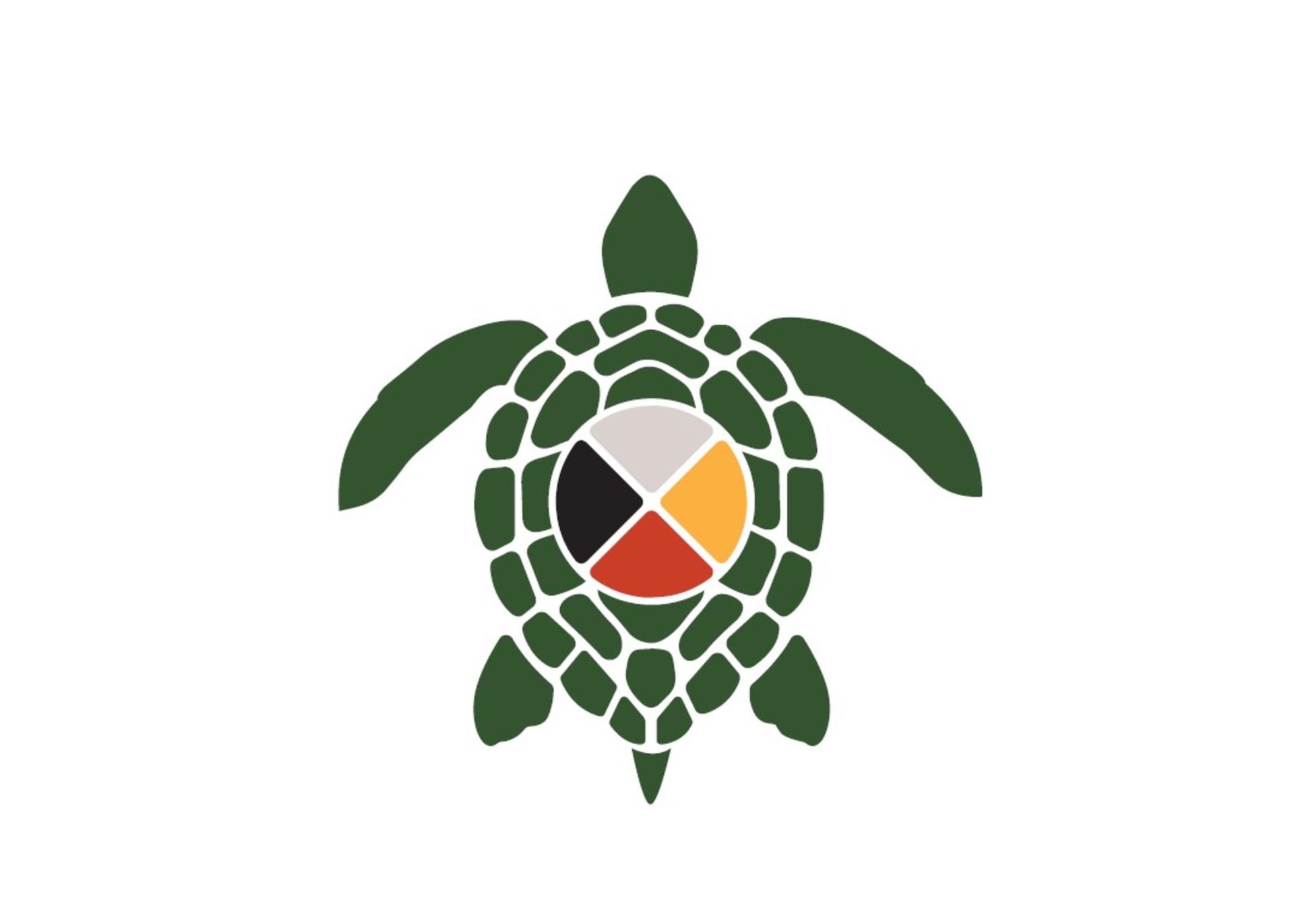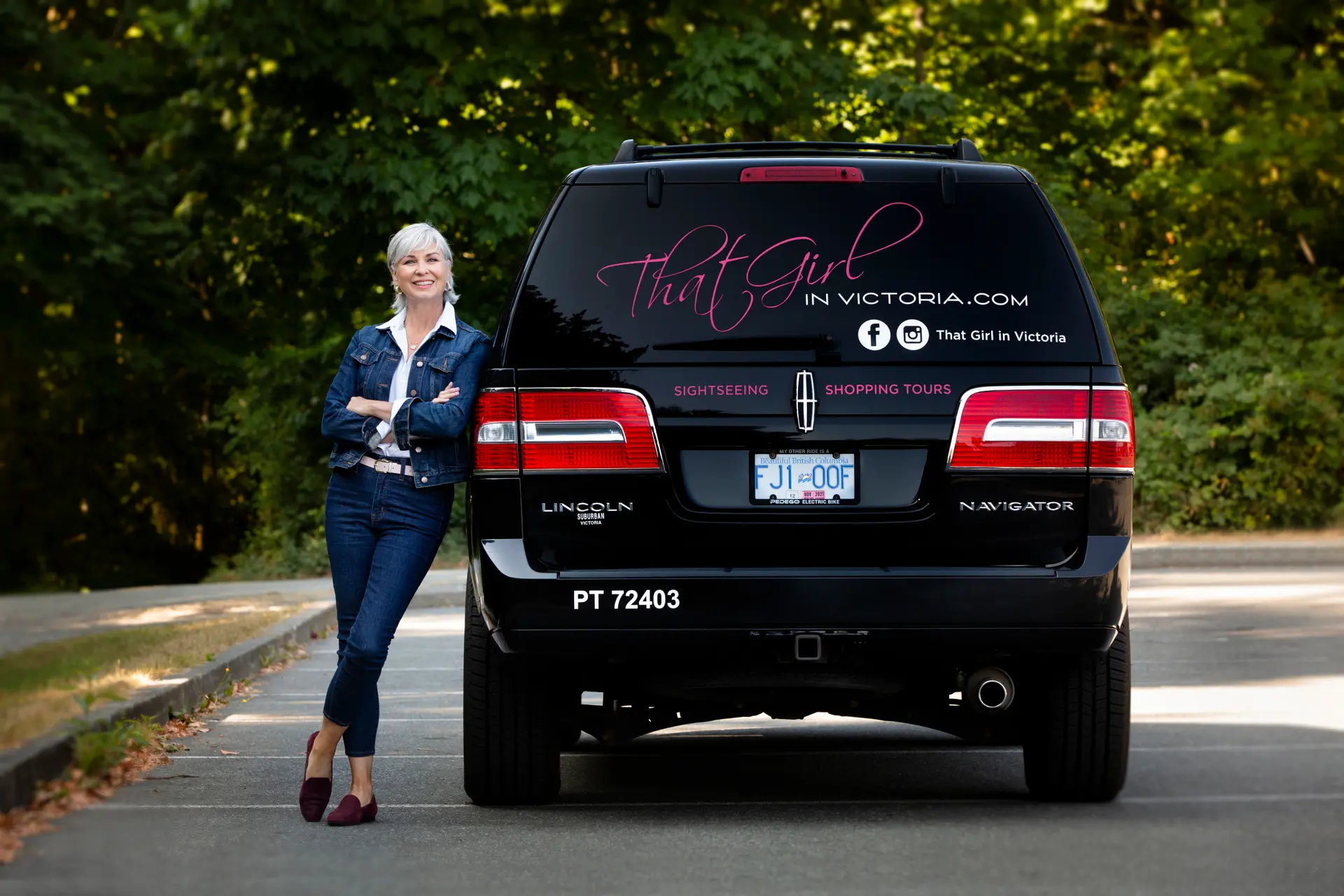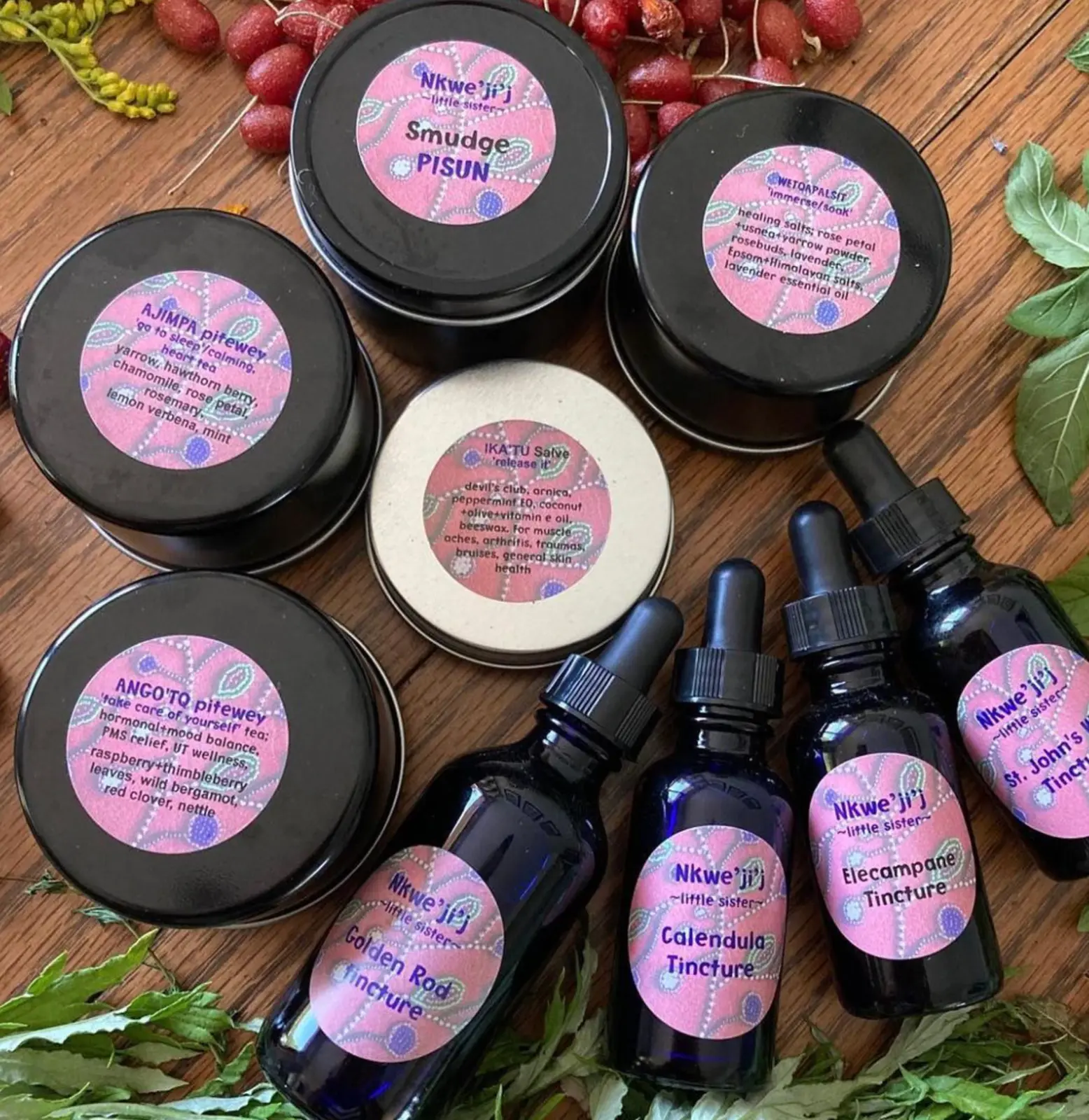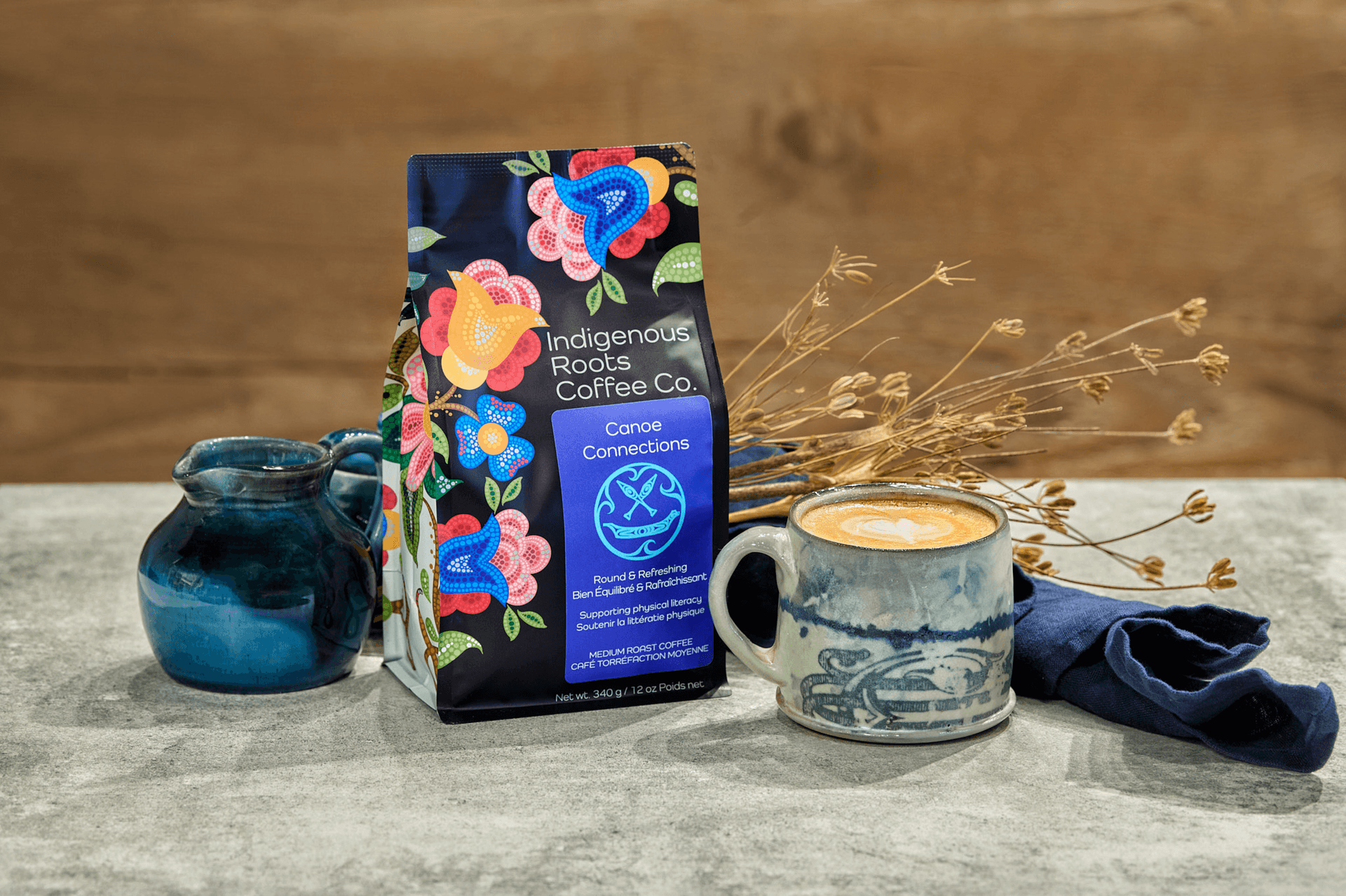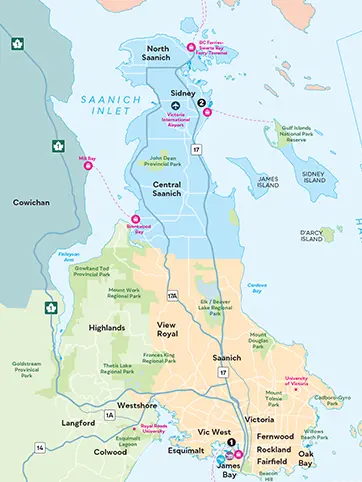Indigenous Culture
Land acknowledgement
Destination Greater Victoria is honoured to be based on the traditional territory of the Lekwungen-speaking peoples of the Songhees Nation and Xʷsepsəm Nation, and W̱SÁNEĆ peoples, whose historical relationships with the land continue to this day.

Traditional territory
The lək̓ʷəŋən People, now known as the Songhees Nation and Xʷsepsəm Nation, have stewarded these lands and waters since time immemorial—a historic connection that continues today, as rightsholders and key economic development partners.
Your visit is an opportunity to learn about and experience the culture and history of the lək̓ʷəŋən Peoples. As you explore Victoria’s historic streets, look for the Seven Signs of the lək̓ʷəŋən, which mark culturally significant sites for the Songhees Nation and Xʷsepsəm Nation. These bronze casts of original cedar carvings, created by Master Carver Butch Dick and his son Clarence Dick Jr., stand 2.5 meters tall and represent spindle whorls used by Coast Salish women to spin wool.
The Seven Signs are unique site markers designating important places along the Inner Harbour and surrounding areas. To follow the markers and visit these traditional places is to learn about the land, its original culture, and the spirit of its people.
Support Indigenous businesses
Your visit is a wonderful opportunity to learn about and experience local First Nations’ cultures and to support incredible Indigenous-owned businesses.

Bringing the lək̓ʷəŋən language back to life
The lək̓ʷəŋən speaking People's have been working to reawaken their language since 2018. The Songhees Wellness centre works diligently with the local Indigenous Community to preserve and grow the use of the lək̓ʷəŋən language. Language classes are often paired with Knowledge Keepers who share wisdom and traditional skills to students. Students learn a unique version of the International Phonetic Alphabet, known as the lək̓ʷəŋən Phonetic Alphabet, which has now been developed for typing lək̓ʷəŋən on digital devices.
həlitxʷ tθə lək̓ʷəŋiʔnəŋ
Seven signs of the lək̓ʷəŋən
Take a self-guided journey, 10,000 years in the making, through the traditional lands of the lək̓ʷəŋən Speaking People, known today as the Xwsepsum and Songhees Nations. While the emergence of modern day Victoria makes it difficult to experience the land as it was pre-European contact, the Seven Signs of the lək̓ʷəŋən represent seven culturally significant sites of the lək̓ʷəŋən People. In discovering these markers, you will learn about the land, its original culture, and the spirit of its people. Each site is marked with an intricate Spindle Whorl bronze casting of original cedar carvings from Coast Salish Master Carver and artist, Butch Dick and his son Clarence Dick Jr. The signs of the lək̓ʷəŋən are woven throughout the city, with sites located at p'áləc'əs (Songhees Point), South West Bastion of Hudson's Bay Company Fort, skwc'əŋíɫč (Outside City Hall), xws3yq'əm(Lower Causeway), míqen (the "Lookout" at Beacon Hill Park), q'emásəŋ (Royal BC Museum), and Laurel Point..
lək̓ʷəŋən Traditional Territory